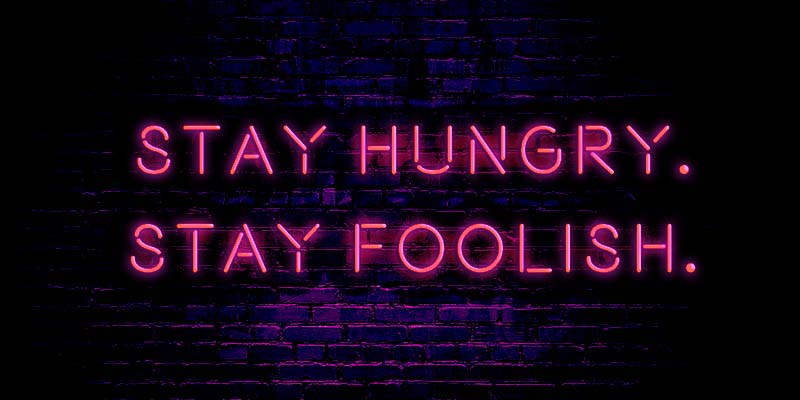Yes, And. The groundwork for all improv as it is the seed that aids in building something from the ground up and provides a frame that everything else hangs from. Am I mixing metaphors too easily? You bet I am, because I used the principles of Yes, And to start this article. But can Yes, And help in the serious world of work?The elephant in the room
Work doesn’t have to be approached as seriously as we tend to. Approach it with intent and purpose, for sure, but as a great villain once said: “why so serious?”
We can approach work without an insistence on a serious demeanour, with a more playful attitude, and still attain and expect a purposeful, carefully considered outcome. These two things are not incompatible. In fact, in certain points in any project, a playful attitude and playlike actions can be entirely beneficial, and more than that, desirable.
Play, when used well, can lead to a wider selection of ideas and a more collaborative team.
So what is Yes, And?
Yes, And is more of a principle or mindset than a rule. It doesn’t really mean having to say yes to anything offered to you or asked of you, as that could be detrimental in so many ways. What the principle allows us to do is bypass that mechanism in our brain that judges an idea as soon as we have heard it, allowed it to breathe, added to it and nurtured it into something brilliant.
A small example of Yes, And in action
I am reminded of how my daughter and her friends played when they were 3 or so. I would often hear them saying to each other:
- “Pretend I have a shop and you want to buy some sweets”
- “Yes, and then pretend we can eat the sweets and play in the park”
There have been many scenarios like this where each child builds on the others idea to create a play-space that is richer and full of the product of more than one imagination.
As an aside, I am reminded of one particular time when my daughter was playing with the little boy from over the road. She was, very much, into her dolls and he was, very much, into Star Wars at that time. Their conversation went something like:
- “Pretend, I have all these babies to look after”
- “Pretend I am a Jedi with a light saber”
- “Yes, you go off to work at Star Wars, while I look after the babies, I’ll see you when you get home from work”
Now, gender roles aside, this is an interesting negotiation that uses Yes, And well. At first, the needs of each child might seem incompatible for a coherent game to develop but the key is that they found a way forward by both accepting the reality each other had offered.
The benefits of Yes, And
The image used at the top of this article is entirely purposeful. You see, I love a hot chocolate, so if anyone offers me one I am totally going to say yes. But recently I went to a local café and they had hot chocolate on the menu, but they’d yes-anded(?) themselves by offering a hot chocolate with maltesers and cream and little bits of flake, dusted with chocolate powder. I was all like “Yes please”.
My point is they’d said “yes” to an idea, the hot chocolate, and then added the “and” to create something even greater. That is the brilliance of yes and, it prompts us to create better. (I must confess, I felt a little sick afterwards, but I know I’ll have another one next time I’m in that café).
This is not the only benefit of adopting this transforming mindset. There are many more, I am sure more examples are surfacing all the time the more we adopt the mindset in different contexts. Max Dickins from Hoopla Impro wrote in his excellent book Improvise! that:
‘yes,and’ can help make you more creative at work, have better conversations at home and be more adventurous everywhere.
Other benefits of the ‘Yes, And’ mindset include:
- Resolving conflict and disagreements;
- Negotiating a way forward (as the example above shows);
- Being more creative by allowing for more ideas to be considered;
- Delaying judgment of other’s contributions or offers;
- Listening with intent to understand.
There are more as secondary benefits occur. Since I adopted the ‘Yes, And’ mindset my relationship with my family is generally a lot more fun and this means I feel a lot lighter in myself. So you can see it has been good for my own mental health and strength.
A word of caution
I have previously mentioned that ‘Yes, And’ does not mean you have to agree with everything offered or say yes to everything. This could lead you into dangerous territory or ridicule. Saying ‘Yes, And’ is a way to explore and allow your curiosity to grow. It is not having to agree to everything. You can still say no, even when adopting a ‘Yes, And’ mindset. Part of making good creative decisions is to converge on the good and useful ideas and this means part of creativity is knowing what to say no to.
So, let us explore ideas before we use our default editor to shut them down. But also. let’s keep ourselves and our teams safe by knowing we can still use no to protect ourselves against the bad ideas and the darker manipulative ones.
In fact exploring ideas using ‘Yes, And’ can help us figure out when an idea is likely to be problematic even when it seems a good and harmless idea when taken at face value. Exploration and curiosity is key and ‘Yes, And’ helps us explore and follow our curiosity.
How to ‘Yes, And’
This is a short exercise you can try to introduce ‘Yes, And’ to your team, colleagues or family.
Yes And Friend
In small groups (4 or 5).
The scenario is you are all colleagues talking about another colleague, friend or family member who is not present. You all really like this person. You all start to make statements in turn about this person. For example:
- 1st person: Ashley has settled into the new team really well.
- 2nd person: YES they are a real joy to have in the office, AND they make great coffee.
- 3rd person: YES Ashley makes great coffee AND they can adjust the AC with the power of their mind.
- 4th person: YES they can adjust the AC with the power of their mind, AND they help to elevate the standard of all our work…
A couple of things are happening within this exercise. Firstly, we need to listen intently to be able to repeat what is added each time. Secondly, we are accepting each addition and not negating or blocking the offer. The fictional colleague being described can have qualities you’d really appreciate in a team member and, as they are fictional, they can have supernatural powers, or just great social skills like making good coffee. The point is not what is said but how it is accepted and built on by each person. Give it a try.
Note, nobody is attempting to control where this is going.
There are numerous exercises and games we use to help teams adopt a ‘Yes, And’ mindset. We run workshops on this for organisations and teams large or small in the public or private sector.
Get in touch with us and we can help your organisation and teams explore ‘Yes, And’ and how it can help your work. Let’s play!









